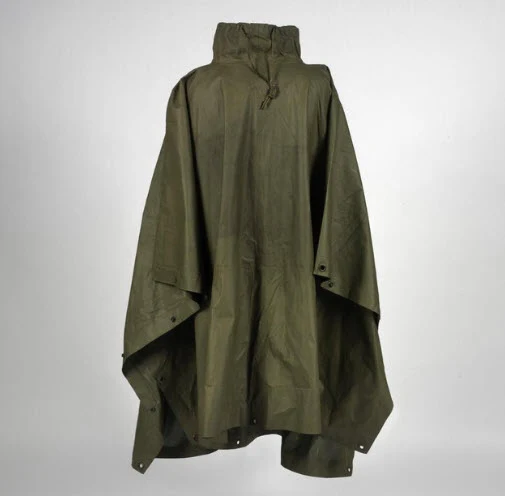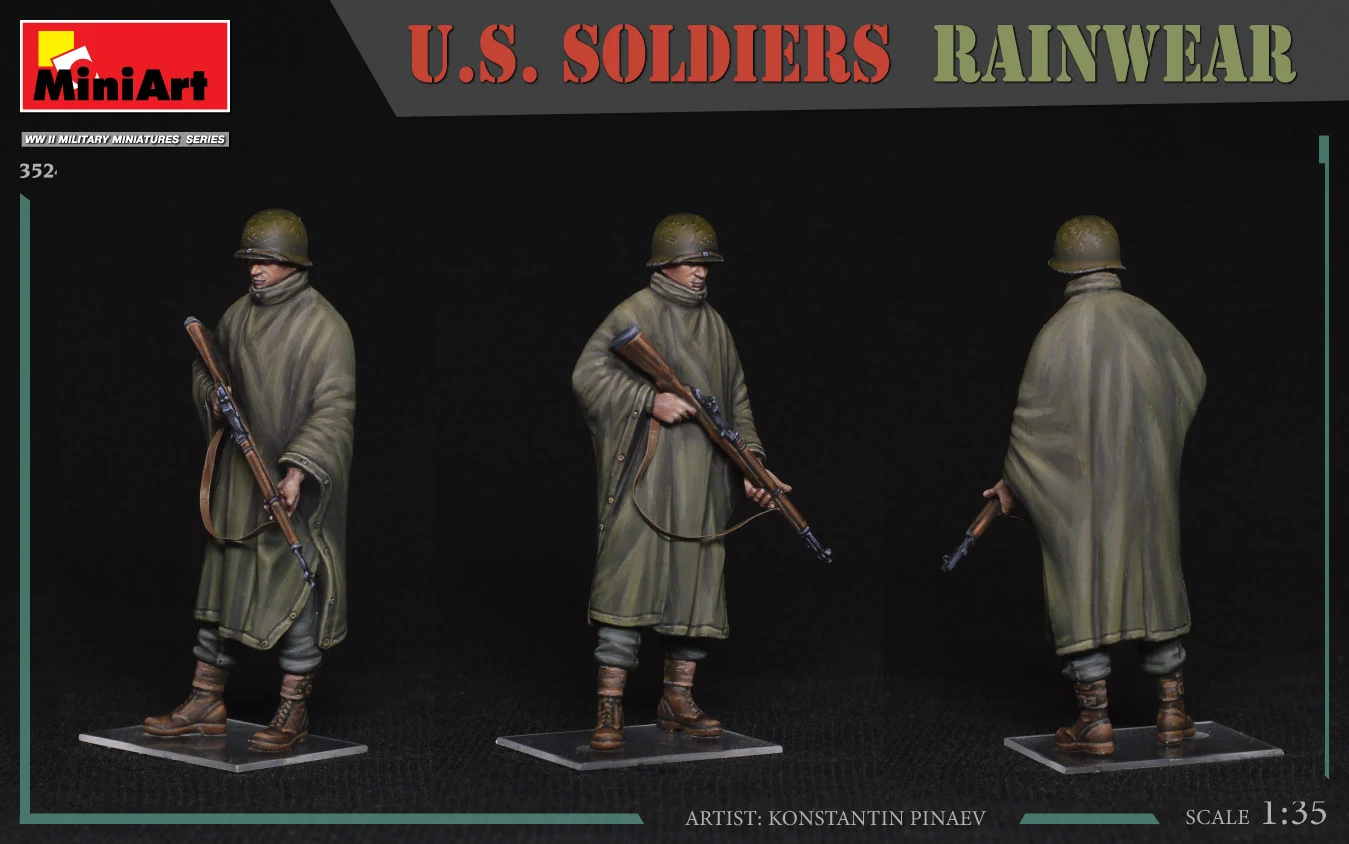Preview: MiniArt's new 1/35th scale WWII GI's in wet weather gear...
US Soldiers Rainwear
Kit No #35245
From MiniArt
1/35th scale
The kit contains five US soldiers
The Subject:
Being a soldier means you have to fight and work in all types of weather, snow, heat, rain and hail. The US GI of the WWII era was supplied with a few different options of raincoats and ponchos to try and keep them dry while on duty.
Raincoats in World War II
Raincoats were issued to U.S. Army enlisted men as a regular part of their field gear. In 1938 the rubberized fabric raincoat was standardized, replacing the previous oil-treated fabric raincoat. This raincoat was replaced after a few years by a new synthetic material raincoat developed in cooperation with Goodrich Co. based on their Koroseal synthetic. After 1942, the synthetic raincoat was supplied during World War II although the fabric raincoat continued to be found in use.
The design of the raincoat was a five-button, straight front coat with two pockets that opened to the inside so the wearer could reach into clothing pockets while wearing the raincoat. Both regular and raglan sleeve designs were produced.
The standard-issue poncho
Two types of ponchos were produced for Army use during World War II. In July 1942 ponchos were made for Army testing using a pattern already in use by the USMC. The poncho was deemed less desirable than the synthetic raincoat since it was harder to reach a gas mask or cartridge belt under the poncho than the raincoat while the raincoat was at least as good as the poncho in keeping dry. Nonetheless, wartime shortages of materials led to the procurement of synthetic resin-coated ponchos because it was simpler and cheaper to make than raincoats, although rather heavy.
Grim-faced American soldiers fighting on Okinawa in wet weather ponchos listen to a radio broadcast of the surrender of Germany and the end of WWII in Europe, May 1945.
Looking for a lighter material, a synthetic coated aircraft nylon poncho was developed and went through several designs before being deemed satisfactory for field use when made with rip-stop material. In November of 1943, a lot of 100 ponchos were sent to troops in the Pacific for evaluation and reports were good. Early in 1944, the nylon design was standardized as the "Lightweight Poncho", seen in the photo to the right.
The nylon poncho was 1 pound 13 oz. lighter than the coated cotton model, a very significant advantage. The poncho was 66 inches wide and 90 inches long. It was made like a Mexican serape, with a neck opening that was closed by a drawstring that closed with a rubber keeper to prevent rain from running down the neck. Unlike later ponchos, it did not have a hood. Double snap fasteners down both sides could be pushed together to form sleeves. They could also be used to join several ponchos together to form a tent with the idea that the poncho could replace both the raincoat and the shelter half.
The kit: the wet weather gear of US GIs during WWII...
This set of five figures contains ten (10!) sprue of light grey plastic. Each of the figures is wearing wet weather gear that dates to the WWII period for US GIs. Each figure comes on his own separate sprue.
This set of five figures contains ten (10!) sprue of light grey plastic. Each of the figures is wearing wet weather gear that dates to the WWII period for US GIs. Each figure comes on his own separate sprue.
Another five sprues with weapons and equipment is included in the set. You can swap load and equipment to a certain degree.
That is all we know about this kit so far, See more about all of MiniArt's kits on their website...
New MiniArt Kits Available August 2021
Status Changed – Again Available:



































